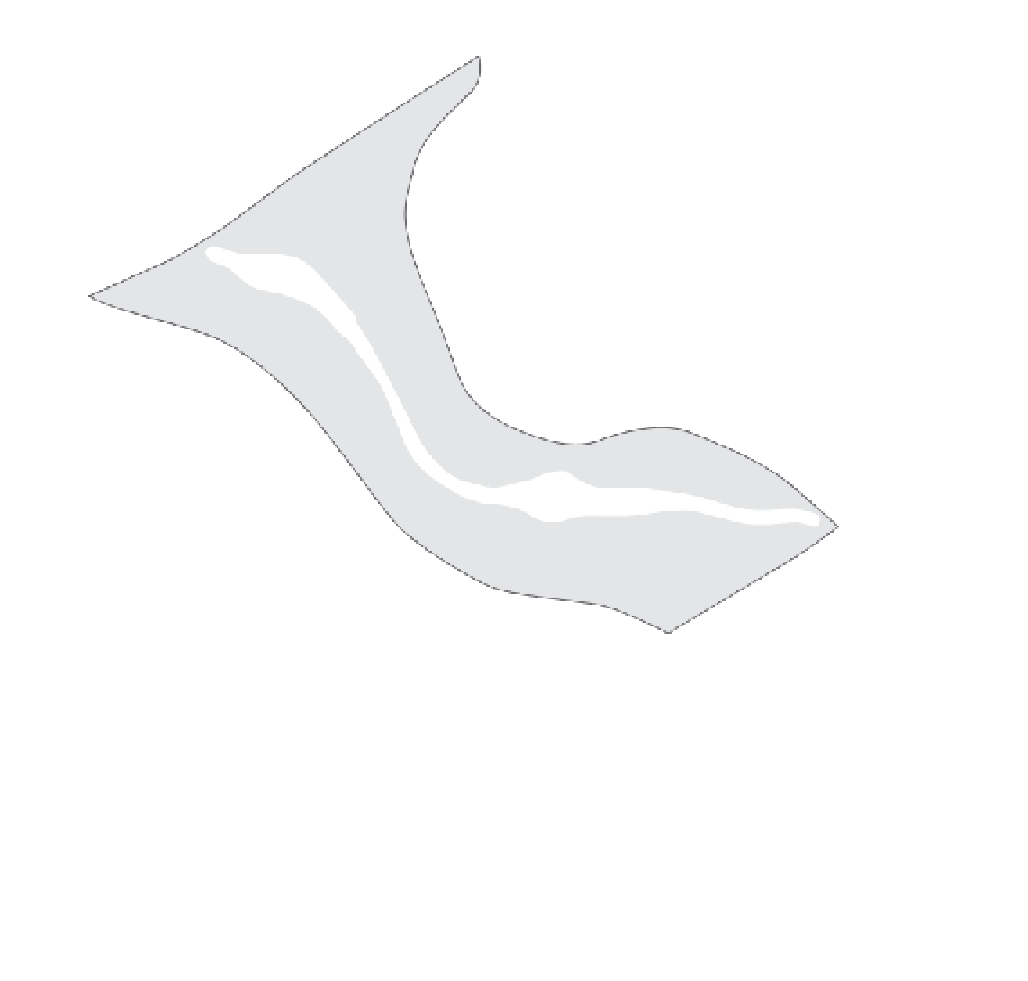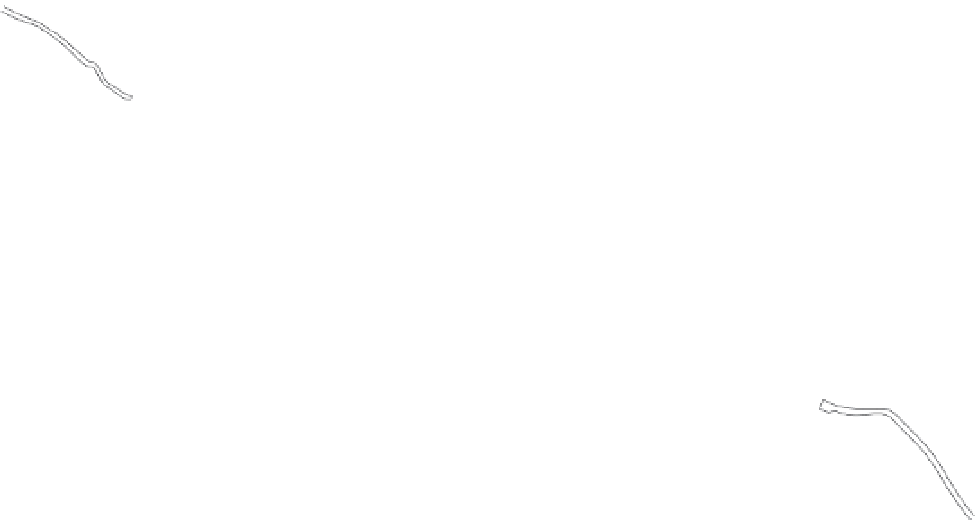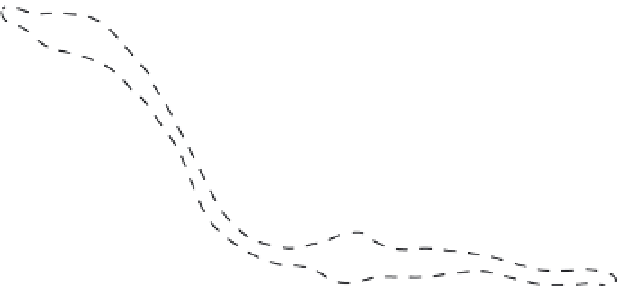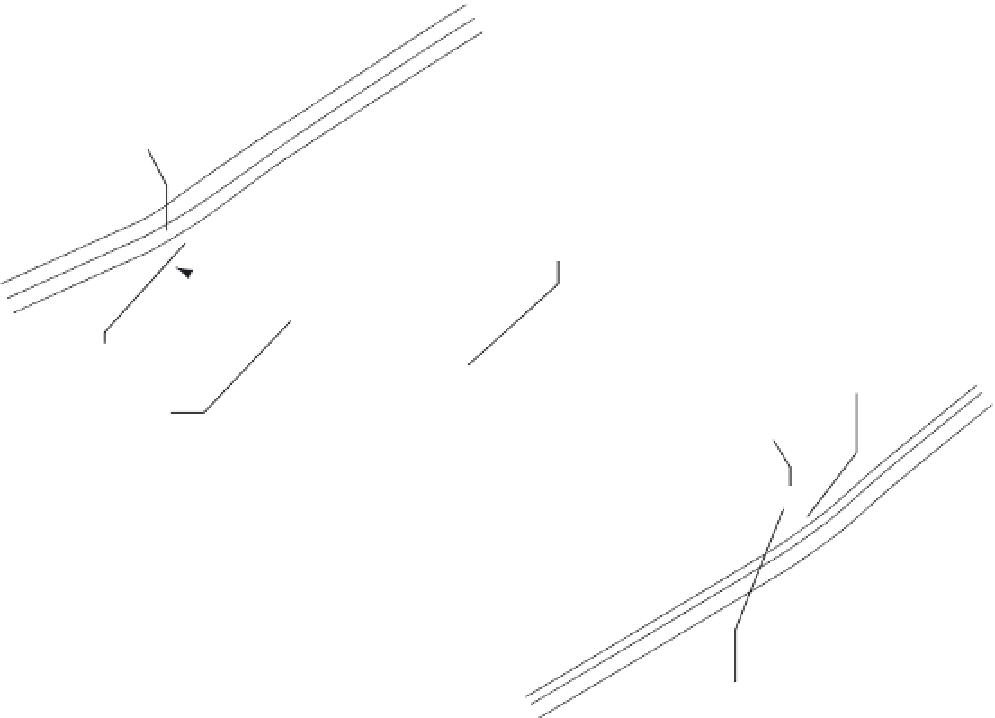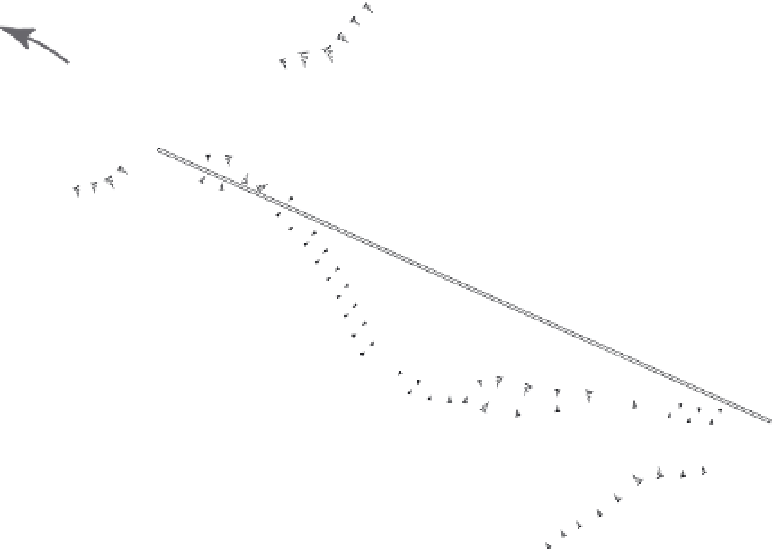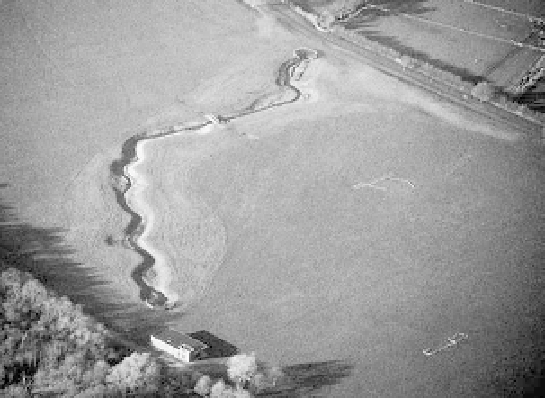Environmental Engineering Reference
In-Depth Information
N
Native shrub
planting at outlet
Existing culvert
to be retained
Existing culvert retained;
end plugged with concrete
and 300 mm-diameter concrete pipe
inserted to provide discharge for
existing land-drain connections
and flood storage
Low-level
'clapper' footbridge
New inlet
to existing culvert
Existing culvert
removed
Native shrub
planting at outlet
Existing culvert
to be removed
New outlet
to existing culvert
Fig. 11.1
Plan for opening up a culverted channel along the River Ravensbourne, London, UK. The inset shows the
new sinuous course (Environment Agency).
for example, approximately 90 km of Zürich's
streams have been culverted. New legislation aims to
restore over 26 km of surface streams in this city alone
(Pinkham 2000).
Ideally, river restoration should encourage a return
to natural flow regimes, free passage for fish (i.e. dam
and weir decommissioning) and reconnection to the
floodplains. Clearly, very few societies are, at present,
in a position to achieve this and hence individual
needs and objectives must be acknowledged. This can
considerably influence the restoration outcomes of
schemes. Luxembourg, for example, has all inland rivers
and thus waste water (water quality) is the main
problem; Ireland has spent over a15 million on
fisheries-rehabilitation measures (see O'Grady 2001;
Fig. 11.2); southern Spain's main concern is improving
